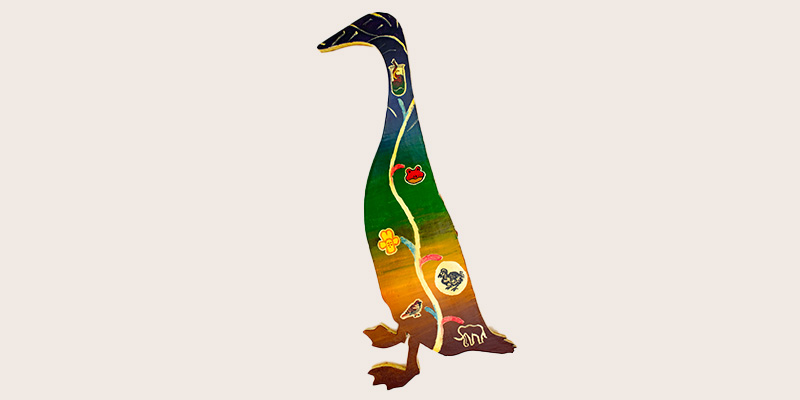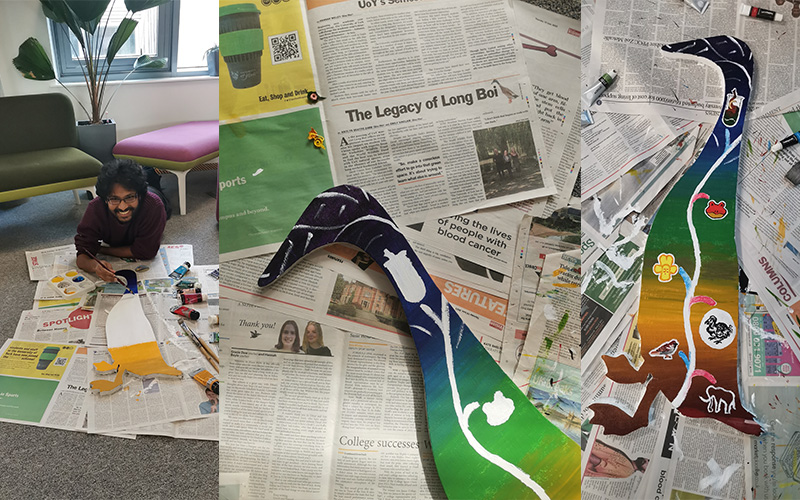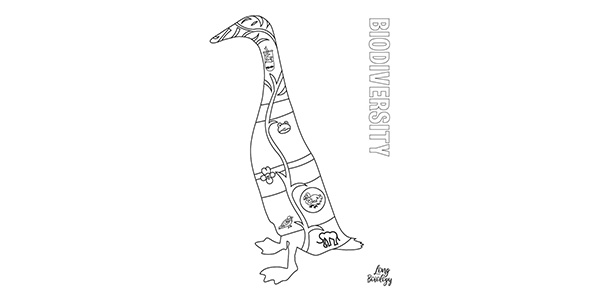
Biodiversity
This duck was created by Joshua Sammy, Helen Mylne and Shuyu Deng.
Through history, species have been lost and gained through extinction, speciation, hybridisation, and changes to species distribution. Over the period of the Anthropocene, humans have been a driving force in many of these events.
Changes in planetary and local biodiversity are represented in the artefacts that we find in the soil. Moving up through the soil strata, we see the loss of mammoths and the great megafauna, followed by the hybridisation of Spanish sparrows and house sparrows to produce the Italian sparrow during the time of the Romans.
Most recently, we depict the golden toad of Costa Rica's cloud forests, officially declared extinct in 2004 and likely driven to extinction by a combination of habitat loss, climate change and disease.
As the past moves into the present and the future, the trail of species diversity becomes unclear, with many possible paths to take. With the potential for de-extinction of previously lost species on the horizon, including those megafauna that walked the tundra during the Stone Age, who knows where our planet's biodiversity is headed?
To highlight the changes over time, each species is represented in an art style representative of the time of its extinction or appearance: from mammoth cave paintings through art deco flowers to a dead frog emoji, our duck has it all.
Towards the top you can see the trail getting more ethereal as the future is yet to unfold, as we don't know what new speciations and extinctions may come to pass.

This duck is representative of the combined work of many researchers in the Leverhulme Centre for Anthropocene Biodiversity. The Anthropocene spans approximately the past 11,000 years of history, and we have researchers investigating many aspects of biodiversity and biodiversity change over that time frame.
The evolution of biodiversity through human history is one of the key themes that ties together a huge range of biological, economic, historical and social research within the Leverhulme Centre, and has inspired a wide range of interdisciplinary outputs.
Study with us
Make your own duck
Didn't get the chance to attend the Art Trail Festival of Ideas workshop?
You can still colour your own biodiversity duck and make it your own.
